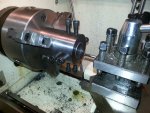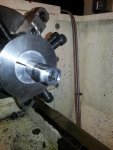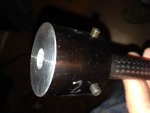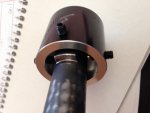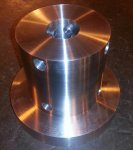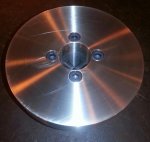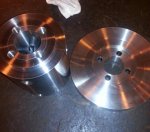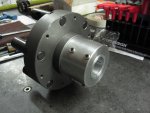The point I'm trying to make is some setups are reliable and some aren't. Don't fall into the trap that what works for one process automatically works for another. How reliable/accurate are those two points. First they are not very far apart compared to the length of the bolt. That introduces error that's multiplied over the length of the bolt. Then Remington bolts are made from three pieces. The handle, the body (tubular) and the head which is soldered and pinned to the body. I have never seen the heads attached with any kind of precision. It is never in perfect alignment with the body. Also I have seen bodies that were banana shaped.
To test this turn a 60 degree center on a piece of round stock. You should have this already made already. Put it in a 4 jaw chuck or an adjustable three jaw chuck. Just for giggles indicate that in if done in a 3 jaw and then transferred to a 4 jaw. Put the rear of the bolt on this center and lightly put the center in the tailstock in the firing pin hole. Run an indicator back and forth along the bolt body and see what you get. Then adjust the chuck trying to achieve zero run out front to rear in 4 locations 90 degrees apart on the body. Don't worry about the run out radially. That's not important in this process. Go between the lugs all the way to the nose. Somewhere in the process you'll say this is as good as I can get it. That's when you take a light cut on the rear of the lugs. Then check radially in several places along the body as part of the learning process.
An alternative setup is to screw a stub in the rear of of the bolt. Put it in the lathe clamping on the bolt body, take a clean up cut on the stub(maybe 3/8" long), swap ends holding the stub in the chuck and go through process of aligning the body.


